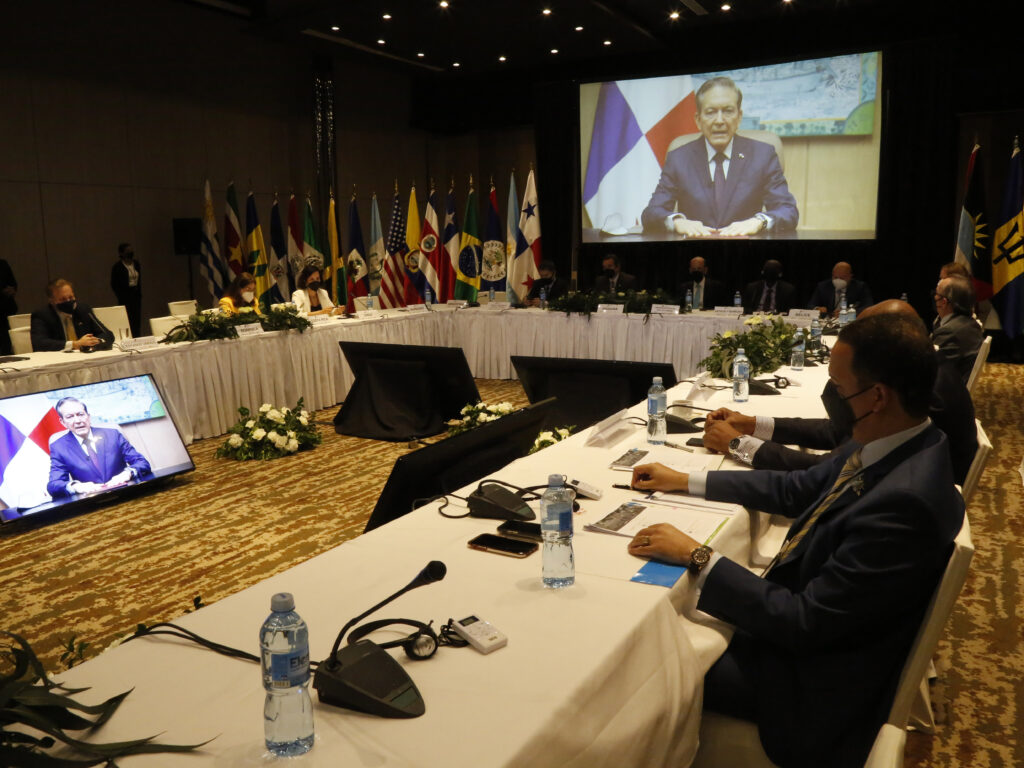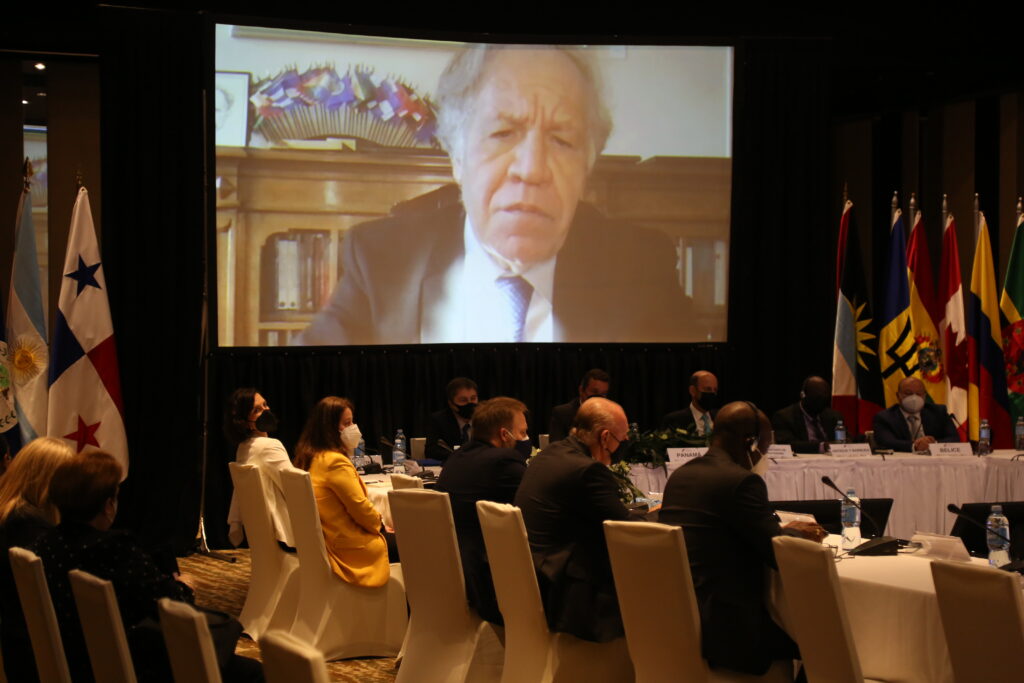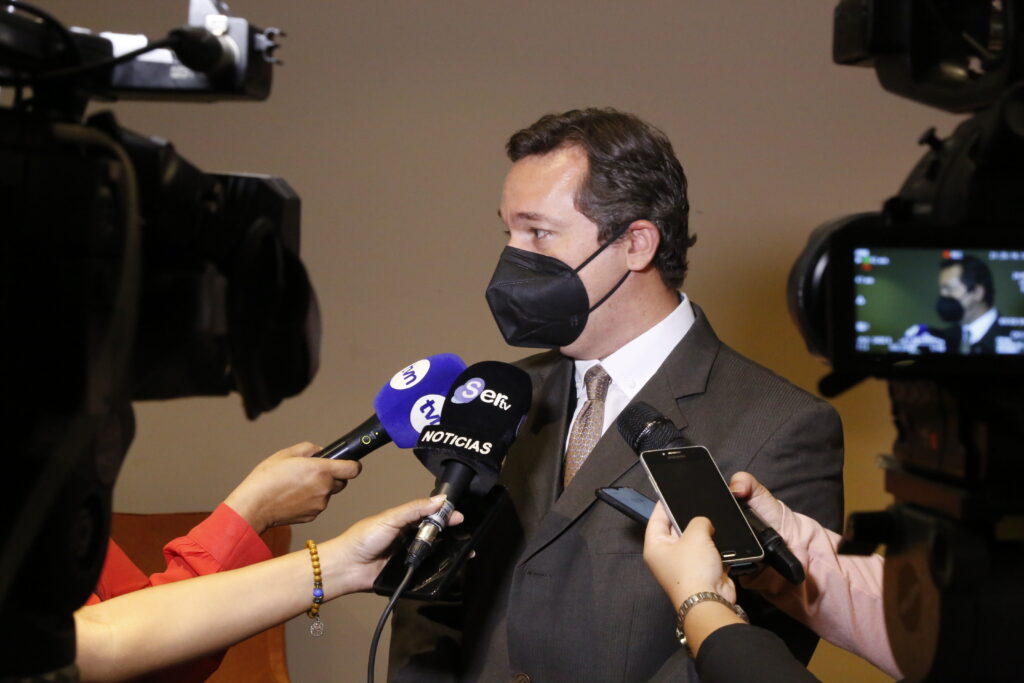

President Laurentino Cortizo welcomed energy ministers and other high-level officials representing 27 countries, who gathered in person in Panama City—or virtually from their own capitals—on February 10 and 11.
“Energy is the foundation for the development of a more competitive economy that can produce more opportunities for employment, more income for people, and can make it possible to improve living and working conditions, especially for the most vulnerable populations,” Cortizo said at the opening ceremony.
“One of our government’s strategic objectives is to drive the transformation of the system for the generation, transmission, and distribution of electricity, for the benefit of all Panamanians,” he added.

Laurentino Cortizo Cohen, President of Panama | Credit/Source: Presidency of Panama
During the two-day session, participants shared some of their countries’ successes and challenges and discussed how they could strengthen their cooperation to meet ambitious goals on energy and climate action.
Against the backdrop of the global COVID-19 pandemic, which has not only brought devastating loss of life but also set back economic growth and deepened inequality, they talked about democratizing energy and expanding access to all its benefits—a priority reflected in the theme of the meeting, “Just and Inclusive Energy Transitions.”
The transition to clean energy “must take place without leaving people behind,” said John Kerry, the U.S. Special Presidential Envoy for Climate. “We need to do this in a way that recognizes that sometimes the least powerful people, the poorest people in the world, are too many times victimized by those processes.”
Energy has wide-ranging economic, social, and environmental implications for every country, noted the Secretary-General of the Organization of American States (OAS), Luis Almagro. From an economic standpoint, it is an essential tool for progress and growth. On the social front, it helps people meet their basic needs and make a living and expands their access to information and education. And the impacts of climate change have raised the stakes for the environment.
“The path of the energy transition is one that benefits all of us,” Almagro said. “It provides access to people who don’t have it. If it’s based on renewable energy, it addresses the climate crisis that affects both the rich and the poor. It presents new and lucrative commercial opportunities for companies. It creates new job opportunities for people displaced from other sectors of the economy who want to rejoin the labor market.”

Luis Almagro, Secretary General, OAS | Credit/Source: Presidency of Panama
The Economic Commission on Latin America and the Caribbean (ECLAC) considers the energy transition “an imperative,” said Jeanette Sánchez, Director of the Natural Resources Division at the United Nations agency.
As the countries in the region move to decarbonize their economies, she said, they need to ensure that everyone has access to modern, reliable energy services, in line with UN Sustainable Development Goal No. 7. The energy transition should make the most of the region’s abundant renewable energy resources while also considering the needs of countries whose economies still depend heavily on the production and use of fossil fuels, Sánchez said.
The scale of the investment needed in the energy sector is enormous, according to Benigno López, Vice President for Sectors and Knowledge at the Inter-American Development Bank (IDB). The IDB has estimated that Latin America and the Caribbean will have to invest around $1.5 trillion in energy infrastructure by 2030, including nearly $580 billion in the electricity sector alone.
Evidence shows that investments that are environmentally sustainable, such as in clean energy and ecosystem conservation, tend to be more economically sustainable too, creating more jobs than investments in fossil fuels, López said.
“There is a worldwide consensus that the recovery from the pandemic must be green and sustainable,” he said.

Benigno López Benítez, Vice President of Sectors & Knowledge, IADB
Panamanian Foreign Minister Erika Mouynes, who also spoke at the opening ceremony, echoed that point and stressed that “what’s good for the planet is good for everyone.”
“The pandemic has forced us to recognize that we cannot keep doing the same as before,” she said. “If we want a sustainable recovery, it is essential to ensure that we’re making the planet better.”
The shift to a more sustainable development model will require the public and private sector and civil society to work hand in hand, Panamanian Energy Secretary Jorge Rivera emphasized. “The full participation of the economic and social fabric of the nation is essential, supported by the active involvement of women, young people, the wisdom of older adults, and the drive of the workforce, recognizing their capacities, skills, and the synergistic impact this generates at the local, national, and regional level,” he said.

From left to right: David Abiamofo, Minister of Natural Resources, Suriname; Walter Verri, Deputy Secretary of Industry, Energy and Mining, Uruguay; and Stewart Tuttle Chargé d’Affaires, a.i. at U.S. Embassy Panama | Credit/Source: Presidency of Panama
The two-day ministerial meeting included plenary sessions on key aspects of the energy transition, including how to foster innovation, promote public-private collaboration in the energy sector, and leverage the energy transition to achieve stronger economic growth.
Universal access to electricity was another topic on the table, and participants talked about their strategies to ensure that everyone, even in the most remote areas, will be able to benefit from this basic service by the end of the decade.
The region has made considerable progress in this regard; in some countries, such as Costa Rica and Uruguay, the proportion of the population without electricity is just a fraction of 1%. And yet, as OAS Secretary General Almagro noted in his remarks, close to 20 million people around the Americas still lack reliable access.
This is a fairness issue that should concern all of society, according to Panama’s Energy Secretary. “For each of our countries, especially ours, every hour in which we have citizens who do not have access to modern forms of energy is 60 minutes of inequality,” Rivera said.

Jorge Rivera Staff, National Energy Secretary of Panama | Credit/Source: Presidency of Panama
The challenge of electrifying the last mile was a focus of a session sponsored by the IDB, one of several concurrent side events held on the first day of the meeting. The IDB also led a session on how countries can fast-track private investment to reach their decarbonization goals.
Another side event, this one sponsored by ECLAC, looked at renewable energy for adaptation and regional integration. Meanwhile, a private sector initiative called the Americas Business Dialogue led two sessions, one on achieving a net-zero future for Latin America and the Caribbean and the other on developing regional supply chains to support the energy transition.
In another concurrent session, Portugal’s Minister of Environment and Climate Action, Pedro Matos Fernandes, talked about his country’s experience in electric mobility. And participants in a Youth Energy Transition Forum offered their perspectives on how to accelerate the energy transition and bring about meaningful climate action.
In the past year or so, there has been “considerable additional progress” on the climate front, with more countries stepping up their commitments to reduce their emissions to net zero by specific target dates, according to Brian Motherway, Head of Energy Efficiency at the International Energy Agency (IEA). However, he told the ministerial meeting, not all the news has been positive; in fact, last year, global energy-related emissions grew close to 5%, as demand for coal, oil, and gas rebounded.
“What is essential now is for governments to turn their pledges into clear and credible policy actions,” Motherway said. “Ambitions count for little if they are not implemented successfully.”
The representatives meeting in Panama City adopted the ECPA Plan of Action 2022-2024, which will help shape the next steps forward as the OAS member countries continue to work together to achieve real progress on climate and energy.
As Juan Cruz Monticelli, Sustainable Energy Section Chief at the OAS, reminded the delegations, this is a joint undertaking that requires cooperation among and beyond governments. The Energy and Climate Partnership of the Americas, which held its first ministerial meeting in 2010, is a vehicle for strengthening that cooperation, Monticelli said.
The issues discussed in Panama will continue to occupy the region’s energy ministries in the coming months, he said, and will become part of the broader hemispheric agenda to be discussed at the Ninth Summit of the Americas, scheduled to take place in June of this year in Los Angeles. The White House announced in January that the theme of the upcoming meeting of presidents and prime ministers will be “Building a Sustainable, Resilient, and Equitable Future” for the Americas.
In bringing the Fifth ECPA Ministerial Meeting to a close, Panamanian Energy Secretary Rivera underscored the region’s commitment and political will to move the energy transition forward and urged his counterpart to be agents of change.
“The future isn’t something you wait for, the future is something you build,” he said. “With the will that each of us has expressed here, we are building that sustainable future for a just and inclusive transition, and we are doing it together.”
 View Map
View Map